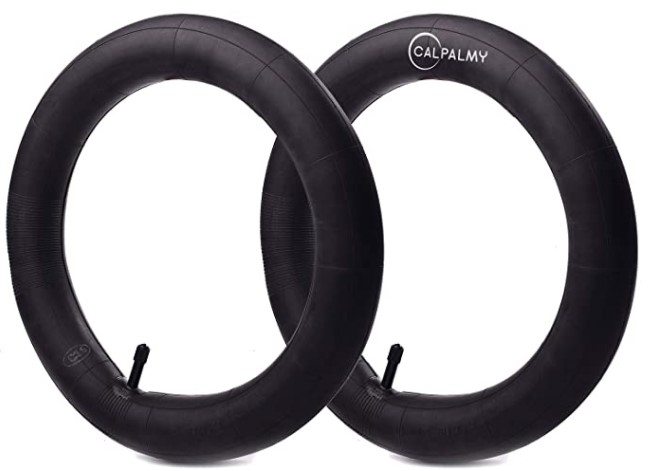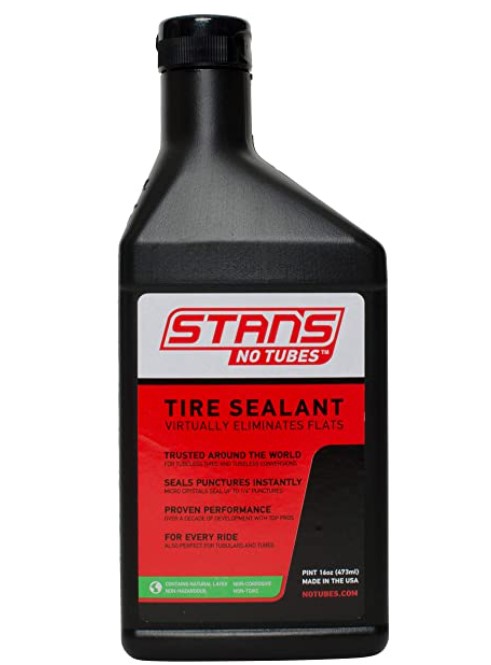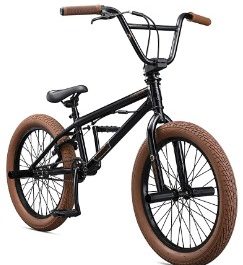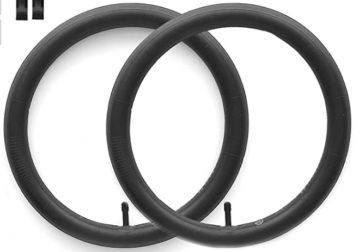Looking at BMX tires, it’s easy to assume that they are tubeless, judging by their size and fast-rolling. So, apart from the air, what else is there? Do BMX tires have tubes?
BMX bikes do have inner tubes. They’re generally latex or butyl rubber and come in different sizes. The diameter of the inner tubes matches that of the wheel, while the standard width is 1.75-2.25 inches or broader for BMX bikes with fat tires.
Having been there, I understand how confusing it can get and how easy it is to assume that BMX tires are tubeless. So, let me get deeper to explain why BMX bikes have tubes and, in this case, inner tubes.
Why BMX Tires Have Tubes
BMX biking came about due to the influence of motocross. One of the most outstanding motocross features is the knobby feature on the tires.
To properly keep the air in, the tires come with inner tubes. BMX bikes generally have tires with a knobby design, with inner tubes as a standard.
Now that we’ve established that BMX bikes have inner tubes, read on as we discuss what materials inner tube manufacturers use and know which type of inner tube you’re running and how to change them.
We’ll also discuss converting your non-tubeless tire to a tubeless one.

BMX Tire Inner Tube Materials
For about 100 years, inner tube manufacturers have used natural or synthetic rubber. Most inner tubes are made from butyl – a synthetic rubber that is less expensive and holds air for long. They’re, however, bulkier and more prone to punctures.
Natural rubber or latex is the other material used for inner tubes. Latex inner tubes offer a smoother ride compared with butyl tubes.
However, inner tubes made from latex are more expensive and not widely available. Latex inner tubes are also more porous and thus lose air faster.
Recently, a manufacturer introduced a new inner tube type made from a thermoplastic elastomer. The manufacturer, Tubolito, says that while their inner tubes weigh 2/3 the weight of butyl tubes, they’re doubly puncture-resistant.
Tubeless vs. Tube BMX Tires
Tubeless tires use a sealant to keep the air inside instead of an inner tube. The cross-section of the tubeless tire remains the same as that of one with an inner tube.
However, they’re more resistant to punctures and offer the best grip due to their ability to run at lower air pressure.
Tube tires have an inner tube filled with air placed inside them. However, friction between the inner tube and casing causes friction, thus reducing efficiency.
For the cycling world, BMX biking included, inner tubes have always been the standard. The main reason for maintaining tube tires is the cost factor. Tube tires are generally less expensive to produce and maintain than their tubeless counterparts.
What Tire Pressure for Your BMX Tire
First off, whether there is a puncture or not, tires do lose pressure. This pressure loss mainly occurs due to the type of material used in the tube’s manufacture. Other factors include the rider’s weight, temperature, and humidity.
Therefore, it’s only natural that you will have to add pressure to your tire. The question is, how much?
The correct tire pressure depends on personal preference and the BMX bike type you ride. However, there is a range that you can work with.
For most tires on adult bikes, the maximum tire pressure is between 100 – 110 PSI (Pounds per Square Inch). Oppositely, the minimum should be between 30 – 40 PSI because that is the range where pinch flats occur for tube BMX tires.
Here is a table to guide you on the pressure range to use depending on the type of BMX you ride. Please note that these are just recommendations. To get a more accurate range, check on your tire’s sidewalls.
| BMX Bike Type | PSI Range |
| Park BMX bike | 80-100 PSI |
| Street BMX bike | 60-80 PSI |
| Race BMX Bike | 70-80 PSI |
| Dirt Jump BMX | 85-90 PSI |
| Flatland BMX Bike | 90-95 PSI |
In case you forget all these ranges, here’s a tip for you; pump your tires until they’re firm but somewhat squeezable.
How Do I Know Whether My Wheels Have Tubes?
Curious to know whether your tires are tubeless or not?
The most accurate method to confirm is deflating your tires and visually checking for the inner tube. However, it’s possible to verify whether your tires are tubeless or not by checking on the type of valve stem present. Tubeless tires mostly have Presta valve stems or modified Schrader valve stems.

People Also Ask
Do BMX Bikes Have Inner Tubes?
Inner tubes are the norm for BMX bikes. The tire surface is lumpy or knobby to offer grip on different surfaces such as gravel, rocks, or other uneven terrains. BMX bike tires come complete with inner tubes to hold air better with such a tire surface.
What Size Is A BMX Inner Tube?
Inner tubes come in varying sizes. The most common sizes for BMX bike inner tubes are 16″, 20″, and 24″. Bikes meant for taller adults come with inner tube diameters of 26″, 27.5″, and 29″.
The width for all these diameters is dependent on the type of tire fitted. When selecting the inner tube for your bike, the main dimensions to remember are the wheel diameter and width. The wheel size you’re running determines the inner tube diameter.
On the other hand, the width varies and can be anything between 1.75 and 2.25 inches, sometimes more.
Check your tire sidewall for these measurements. Therefore, an inner tube labeled 20″ x 1.75 means its 20 inches in diameter and 1.75 inches wide.
What Is the Best BMX Inner Tube?
Some of the most reliable inner tube brands include:
- Vittoria Latex
- Continental
- Maxxis
- Tubolito
- Goodyear
- Kenda
BMX inner tubes are made from natural rubber (latex), synthetic rubber (butyl), or thermoplastic elastomer. Each of these material types has its pros and cons.
Latex inner tubes offer a smoother ride compared with butyl. They’re also more puncture-resistant. However, they cost more and are not widely available.
You’ll need to pump your latex inner tubes every time you go out for a ride since they’re more porous, thus losing air faster.
Butyl rubber inner tubes are less expensive, are easily found, and hold air for longer.
Tubolito (Check on Amazon), a synthetic inner tube made from thermoplastic, offers more but is relatively new.

Generally, How Do You Change an Inner Tube On A BMX Bike?
- To change the inner tube, start by taking the wheel off.
- Unseat the tire using a tire lever, starting from the opposite side of the valve.
- Pull off the valve from the rim and remove the inner tube.
- If you’re changing your inner tube due to a puncture, check the tire surface for foreign objects such as glass, thorns, etcetera.
- Slightly inflate the inner tube before fitting it back onto the rim.
- Seat the tire, taking care not to pinch the inner tube when using a tire lever.
How Do You Go Tubeless On A BMX?
It’s possible to convert your BMX tires from tube to tubeless. Full disclosure – not all tires will work. Specifically, hard tires or low-quality ones will not work.
You’ll also want to ensure that your tires are labeled “Tubeless-compatible” or “Tubeless-ready.” And while not mandatory, your rims should also be tubeless-ready.
You’ll also need tons of patience. The conversion will take time – a few hours or even days.
Once you’ve established that the tires are compatible, ensure you have the following items; denatured alcohol or acetone, rim tape such as Velox Jantex (Check on Amazon), and a razor or cutting knife.
Let’s get into it then.
The Process
- Remove the bike wheels from the axles. Let the air out.
- Take the tire off the rim using a tire lever, followed by the inner tube. Remove the rim tape attached to the rim’s underside. This tape helps prevent the inner tube from popping up where the spokes go.
- Apply the denatured alcohol or acetone on a cloth and wipe the frame. Take care to wipe off the remnants of the rim tape glue completely. The new tape will not hold correctly with old glue still on the rim.
- Look for the valve stem position once the frame is clean and dry. Start applying the rim tape a few inches ahead of the valve stem position. The rim tape helps form an airtight seal. Overlap the tape beyond your start point by a few inches.
- Using an air compressor, fill the inner tube with air. Fit it onto the rim. Puncture the top part of the tube and cut it along the center. Spread the cut inner tube to overlap on either side of the rim edge.
- Wipe out the white rubber particles found on the cut inner tube.
- Seat the tire onto the rim up to the valve location, taking care to match the valve stem position and logo on the rim. Do not use a tire lever. It might puncture the inner tube that you’ve spread on the rim.
- Pour in a tubeless sealant like Stan’s (Check on Amazon) before completely seating the tire onto the rim.

And More
- Alternatively, you could completely seat the tire onto the rim and then introduce the sealant using an injector such as Stan’s injector (Check on Amazon). This injector is compatible with either the Schrader or Presta valves.
- Gently roll the wheel around to spread the sealant.
- Pump air back using a compressor and fit your wheel back in. Experts recommend leaving the set up to settle overnight before you start riding.
- Using the cutting knife or razor, gently trim away the spare inner tube on the rim and your tubeless setup stands completed.
In Conclusion – Do BMX Tires Have Tubes?
As long as the bike runs smoothly, the inner tube rarely crosses a rider’s mind. It is essentially the appendix to your BMX bike – you only realize its presence after it punctures. However, since BMX bikes mostly have tires with inner tubes, make sure to have a few of them at hand. You never know when you’ll need them.
Relevant Post:


